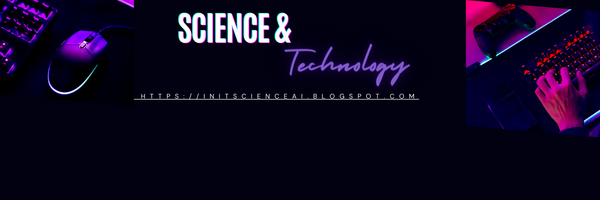AI Text-to-Video War Heats Up: China’s Kling Challenges OpenAI’s Sora
In the swiftly evolving field of artificial intelligence, AI-driven text-to-video technology is emerging as a new battleground. This innovative technology converts written content into dynamic videos, offering vast potential for content creation, marketing, and entertainment. Leading this race are OpenAI’s Sora and China’s Kling, each vying to dominate the landscape with their transformative capabilities.
The Rise of AI Text-to-Video Technology
AI text-to-video tools use advanced algorithms and machine learning to turn text into engaging videos, complete with animations, visuals, and narration. This technology revolutionizes content creation by allowing users to automatically generate compelling videos from written scripts. Its applications span educational content, news summaries, promotional videos, and storytelling.
OpenAI’s Sora: Revolutionizing Video Creation
OpenAI, a pioneer in artificial intelligence, has introduced Sora, a cutting-edge video-generation model. Sora marks a significant advancement in AI technology, capable of transforming simple text instructions into vivid, lifelike videos.
Key Features of Sora:
- Photorealistic Video Generation: Sora can create highly detailed and realistic videos based on text prompts, making it an essential tool for content creators.
- Complex Scene Construction: It supports the creation of intricate scenes with multiple characters, dynamic camera movements, and rich backgrounds.
- Expressive Animation: Sora animates characters with vibrant emotions and interactions, bringing text to life.
OpenAI showcases Sora’s versatility through various demonstrations, such as an aerial view of California during the gold rush and a simulated train journey in Tokyo. These examples highlight Sora’s ability to interpret and replicate the physical world, creating compelling narratives from simple prompts.
Challenges and Limitations:
While Sora’s outputs are largely impressive, certain limitations persist. Observant viewers might detect discrepancies in the simulation of complex physics, a common issue in AI-generated content. OpenAI acknowledges these challenges and is actively working to enhance the model’s performance.
Ethical Concerns: OpenAI stresses the importance of responsible use. Recent measures, such as adding watermarks to their text-to-image tool DALL-E 3, reflect their commitment to preventing the misuse of AI-generated content, particularly concerning deepfakes and misinformation.
Enter China’s Kling: A Formidable Challenger
China’s Kling has entered the fray, presenting significant competition to OpenAI’s Sora. With robust investments and China’s growing AI expertise, Kling aims to push the boundaries of text-to-video technology.
Key Strengths of Kling:
- Cultural Adaptability: Kling excels in tailoring content to various cultural contexts, crucial for global applications.
- Advanced AI Algorithms: It uses cutting-edge AI algorithms for accurate and contextually rich video generation.
- Comprehensive Content Creation: Kling offers tools for creating not just videos but also interactive and immersive multimedia experiences.
Kling’s focus on localization and customization allows it to cater to diverse markets, giving it a competitive edge in regions with specific cultural and linguistic needs.
Comparing the Contenders
Technology and Innovation:
Both Sora and Kling leverage advanced AI but differ in their approaches. Sora emphasizes seamless integration and user accessibility, simplifying video creation from text for those with minimal technical expertise. In contrast, Kling focuses on advanced algorithms and cultural adaptability, offering nuanced and locally tailored content.
Market Reach: Sora has gained traction in Western markets, with strong adoption among businesses, educational institutions, and content creators. Kling, meanwhile, is rapidly expanding in Asia and other regions, benefiting from its cultural adaptability.
User Experience: Sora provides a user-friendly experience with intuitive tools and interfaces, making video creation straightforward. Kling offers advanced customization options and interactive content generation, appealing to users seeking more control and creativity in their video production.
Industry Perspectives
Jaspreet Bindra, Founder of TechWhisperer UK Limited:
“Sora is the ChatGPT moment for videos, producing astonishingly clear and realistic videos. However, the risk of deepfakes, especially involving celebrities or sensitive content, is concerning. Questions about tracing creators and implementing safeguards are critical.”
Pawan Prabhat, Co-Founder of Shorthills AI:
“Sora represents a remarkable leap in video creation technology, capturing nuances like facial expressions with precision. While Sora stands out for its quality, responsible and ethical use is crucial.”
Implications for the Future of Content Creation
The competition between Sora and Kling underscores the growing significance of AI in content creation. As these technologies evolve, they promise to transform how we generate and consume video content, offering potential benefits like:
- Efficiency: Reducing the time and resources needed for video production, making it accessible to more users.
- Creativity: Allowing creators to focus on creative aspects by automating routine tasks, enhancing overall content quality.
- Personalization: Tailoring videos to specific audiences, improving engagement and relevance.
Challenges and Considerations: Despite these benefits, AI text-to-video technology presents challenges, including ethical considerations, intellectual property rights, and the potential for misuse. Both OpenAI and Kling must address these issues responsibly to ensure their technologies’ positive impact on the content creation landscape.
Conclusion
The AI text-to-video war between OpenAI’s Sora and China’s Kling marks a pivotal moment in the evolution of content creation technology. As these platforms compete, they push the boundaries of AI-driven video generation. For content creators, businesses, and consumers, this rivalry promises innovative, efficient, and personalized video content, shaping the future of digital media in profound ways.
Stay tuned for more updates as we continue to explore the dynamic developments in AI text-to-video technology and its impact on the future of digital content creation.






.jpg)









0 Comments